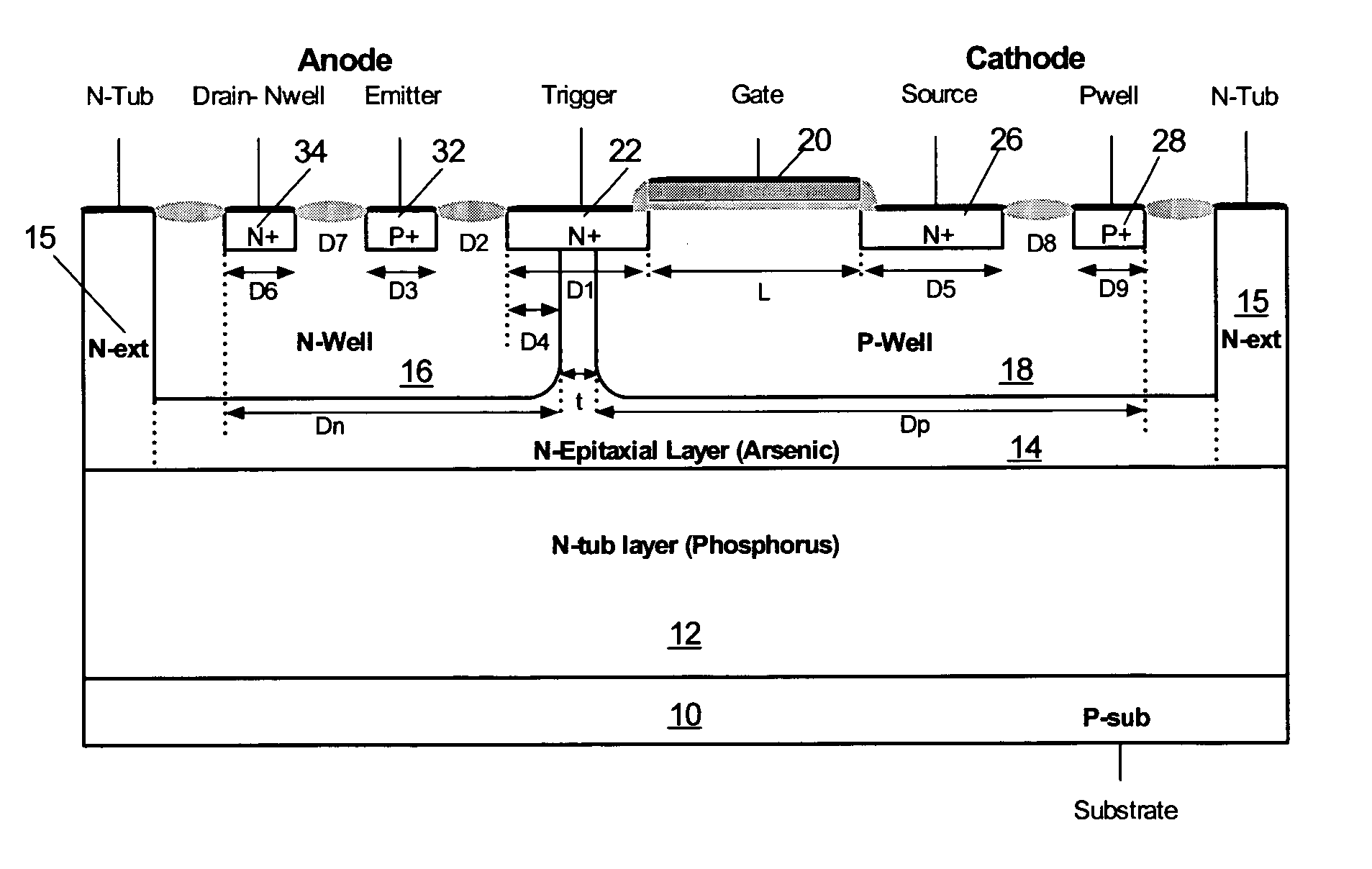On-chip structure for electrostatic discharge (ESD) protection
a technology of electrostatic discharge and on-chip structure, which is applied in the direction of semiconductor devices, semiconductor/solid-state device details, electrical apparatus, etc., can solve the problems of huge current, ic's vulnerability to electrostatic discharge (esd), and the tendency to miniaturize the integrated circuit (ic) and other critical reliability problems, so as to achieve a wide range of effects, efficient and reliabl
- Summary
- Abstract
- Description
- Claims
- Application Information
AI Technical Summary
Benefits of technology
Problems solved by technology
Method used
Image
Examples
Embodiment Construction
[0039] This disclosure presents an ESD protection solution by using the schematic presented in FIG. 1, and highly efficient silicon controlled rectifier (SCR) design, called the high holding voltage / low voltage trigger SCR (HHLVTSCR), for the supply clamp and I / O ESD protection cell shown in FIG. 1. The N-HHLVTSCR and P-HHLVTSCR possess a very low leakage current and a tunable holding voltage from less than 2 V to over 11 V.
[0040] The schematic in FIG. 1 is slightly different from the schemes traditionally used for ESD protection. In our design, the complete ESD protection is accomplished with a bidirectional ESD protection, with only a ground reference at the I / O pads, and a bidirectional supply clamp. Based on this approach, either identical or different structures can be designed for the supply clamp and I / O protection cell, depending on the bias conditions during normal operation of the internal circuit. For instance, the signal swing at the I / O pad can be either within the ran...
PUM
 Login to View More
Login to View More Abstract
Description
Claims
Application Information
 Login to View More
Login to View More - R&D
- Intellectual Property
- Life Sciences
- Materials
- Tech Scout
- Unparalleled Data Quality
- Higher Quality Content
- 60% Fewer Hallucinations
Browse by: Latest US Patents, China's latest patents, Technical Efficacy Thesaurus, Application Domain, Technology Topic, Popular Technical Reports.
© 2025 PatSnap. All rights reserved.Legal|Privacy policy|Modern Slavery Act Transparency Statement|Sitemap|About US| Contact US: help@patsnap.com



